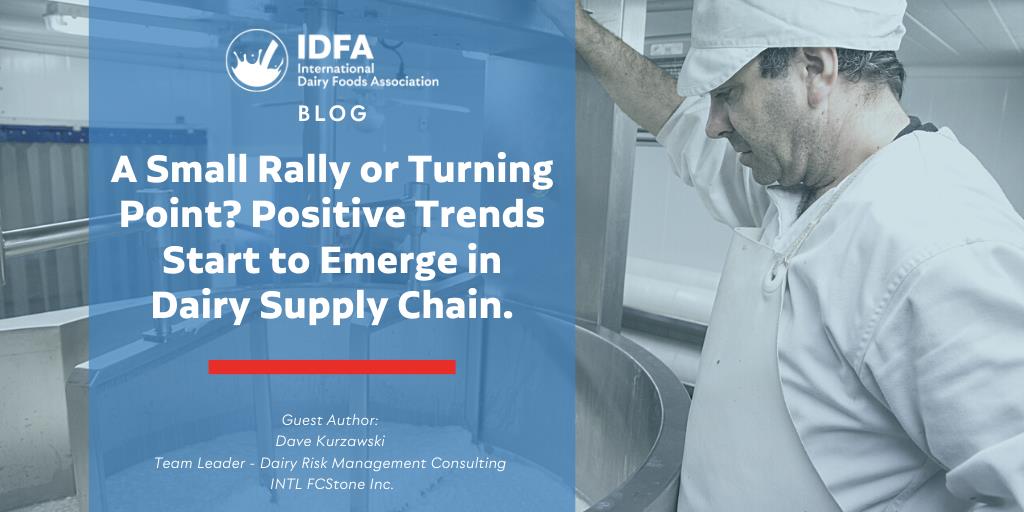IDFA Gold Business Partner INTL FCStone Inc. provides clients across the globe with a comprehensive range of customized financial services and tools to help them protect their margins and manage volatility. A pioneer in specialized financial services, INTL FCStone opens markets for underserved mid-market clients with insight, guidance and access. In this guest blog, team leader for dairy risk management consulting Dave Kurzawski gives perspective on what led to yesterday’s rally in class III milk and cheese. Is it a signal for what’s ahead in dairy, or a more isolated set of circumstances? INTL FCStone shares a quick note with IDFA members on the key drivers of the rally.
- Pipeline refilling. Foodservice suppliers and restaurants probably went into lockdown with plenty of product on-hand which lead to a collapse in foodservice orders coming through to dairy processors in late March and the first half of April. Now that those inventories have been worked down and foodservice sales are improving (and likely to improve further with states loosening their lockdowns), dairy processors are likely seeing a small surge in product heading into the foodservice pipeline.
- Export demand. Information we have on this front is anecdotal, but word on the street is that export demand is quite strong right now, particularly for cheese. With Oceania Cheddar at $2.00 and US at $1.00, it is easy to see why. EU prices have also been falling, but the US has been falling faster (until recently).
- USDA food purchase plans. The USDA announced the details of $470 million in Section 32 food purchases. In this case, they’ve earmarked $120 million to purchase dairy products by June 30th for delivery by September 30th of this year. This is what we – and we believe most of the industry – expected, effectively making today’s announcement a reminder. But a reminder that hit while points 1 and 2 are underway.
The strength seen yesterday was largely driven by a slow assessment of the current fundamentals, followed by a knee-jerk reaction to something we already knew (government purchases). In volatile markets like these, we see that it doesn’t take much to move the market up – or down.
We’ve got a long way to go for dairy this year. For now, the path of least resistance appears to be higher as the markets correct and buyers and sellers of physical product sort out what they need – and what they may or may not have.

